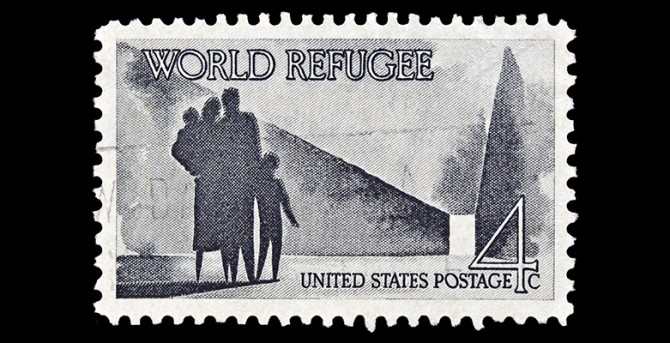Refugees
In 1967, nearly 150 countries signed The Protocol Relating to the Status of Refugees in New York. Known as The 1967 Protocol or the New York Protocol, a refugee was defined as someone who is outside of their country of residence or country of birth and has a fear of persecution for religious, racial, ethnic, or political beliefs. The person must be unwilling or unable to return to his or her country out of fear of persecution or lack of protection. Laws for refugees in the United States and around the world determine where and when an individual may seek asylum in another country.
Legal Background
In the United States, the federal government extends the right of asylum to legally defined refugees. Such persons must make an application for asylum either before or after they arrive in the United States. Currently, refugees account for 10% of all immigrants admitted into the United States every year. The United States has welcomed more refugees than any other nation in the world since The Second World War. Since 1980, over two million refugees have claimed asylum in the United States. Those who apply for asylum in the country are generally required to demonstrate three requirements to be considered eligible. Firstly, the applicant must show that he or she has reason to fear persecution in the home country. Secondly, he or she must also prove that that persecution is based on religion, nationality, race, ethnicity, or political affiliations. Finally, in order to qualify for refugee status, the applicant must also show that the home country’s government is not able to provide protection or is implicated in the persecution.

Affected Groups
Many prominent refugee groups have gained entry into the United States since World War II. From the era of the Cold War until the mid-1990s, most refugees that resettled in the United States were from Southeast Asia or the former Soviet Union. Of the former, many were Vietnamese refugees that sought refuge in the U.S. following the Vietnamese War. After the end of the Cold War, groups of refugees from the Yugoslav wars also came to the United States. At the turn of the twenty-first century, thousands of Africans also sought asylum in the U.S., fleeing a number of ongoing conflicts, such as those in Sudan and Sierra Leone. In most cases, refugees settle in urban areas. Seventy-two percent of all refugees between 1983 and 2004 went to thirty respective cities, including Los Angeles, New York, Chicago, Seattle, San Jose, Washington, Portland, Detroit, and Atlanta, among others. Most of the time, agencies that organize refugee resettlements group members of a particular community in cities where there are resources, agencies, charities and services offered in the refugees’ language.
Challenges
Refugees face a different set of challenges compared to other immigrants. Unlike other immigrants they do not necessarily anticipate and prepare for immigration. They may not have knowledge of English. In addition, an application for asylum can be processed very quickly. They may go from living in a refugee camp one week to a large metropolitan center the next. Given what they may have witnessed or experienced during conflict or persecution in their home country, the culture differences may appear magnified.
